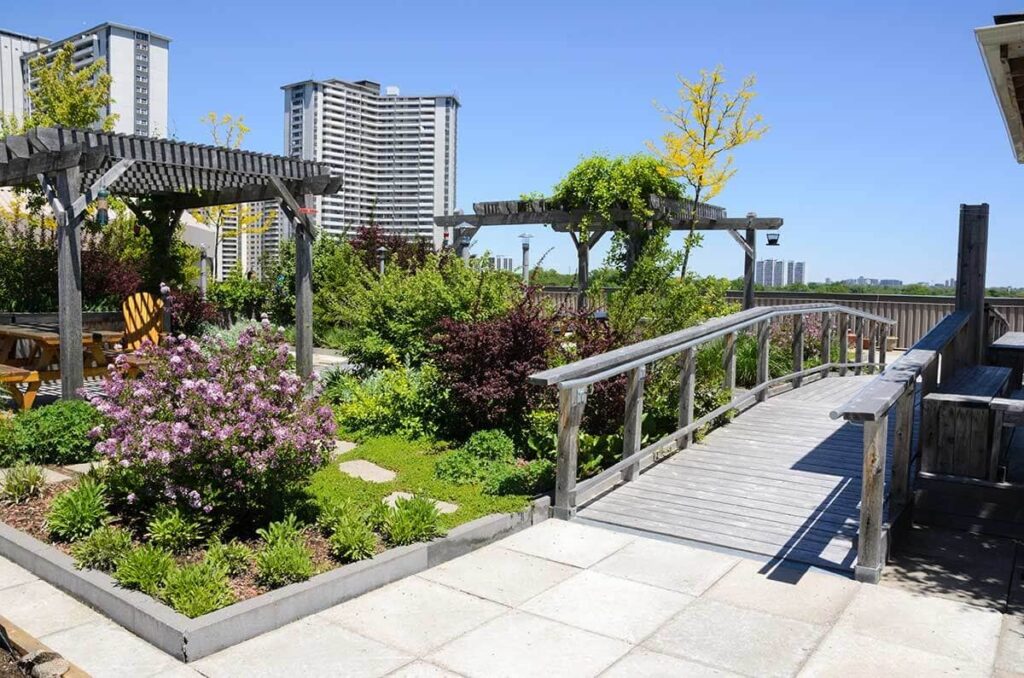Introduction
Have you ever thought about transforming that unused rooftop into a lush, green oasis? A roof garden is a great way to bring nature into an urban environment. Not only does it provide a personal retreat, but it also offers numerous benefits like improved air quality, energy savings, and increased property value. Let’s dive into the details of creating your very own roof garden.
Planning Your Roof Garden
Assessing the Roof Structure
Before you start planting, it’s crucial to ensure that your roof can support the additional weight of a garden. Consult with a structural engineer to evaluate the load-bearing capacity of your roof.
Considering Local Climate
The climate plays a significant role in determining the types of plants you can grow. Consider the local weather patterns, including rainfall, temperature ranges, and wind conditions.
Choosing the Garden Style
Decide on the overall style of your garden. Whether it’s a vegetable patch, a floral retreat, or a combination of both, having a clear vision will guide the rest of your planning.
Designing the Layout
Sketching the Garden Plan
Start with a sketch of your roof garden layout. Plan where to place plants, paths, seating, and other elements. This helps in visualizing the final look and making adjustments before any physical work begins.
Selecting Plants and Trees
Choose plants that are suitable for roof gardens. Opt for drought-resistant and wind-tolerant species. Incorporate a mix of flowers, shrubs, and trees for diversity.
Incorporating Seating and Paths
Designate areas for seating and walking. Use lightweight materials for paths and ensure that seating is comfortable but doesn’t add excessive weight.
Preparing the Roof
Ensuring Proper Waterproofing
Waterproofing is vital to protect your building from leaks. Apply a high-quality waterproof membrane before adding any soil or plants.
Adding Drainage Systems
A good drainage system prevents water from pooling and damaging the roof. Install drainage layers and ensure there are adequate outlets for water to escape.
Installing a Root Barrier
A root barrier prevents plant roots from penetrating the roof structure. This is essential to protect the integrity of your building.
Choosing the Right Soil
Lightweight Soil Mixes
Use lightweight soil mixes designed for roof gardens. These mixes are typically composed of organic material, sand, and perlite.
Nutrient-Rich Options
Ensure the soil is rich in nutrients to support plant growth. You might need to add compost or fertilizers to boost soil fertility.
Soil Depth Considerations
The depth of soil required varies by plant type. Shallow-rooted plants need less soil, while trees and shrubs require deeper beds.
Selecting Plants for Your Roof Garden
Best Plants for Roof Gardens
Opt for hardy plants like succulents, grasses, and sedums that thrive in roof garden conditions. These plants are low-maintenance and resilient.
Edible Plants and Herbs
Consider growing vegetables and herbs. Plants like tomatoes, lettuce, and basil can be easily cultivated in a roof garden.
Decorative Plants and Flowers
Incorporate a variety of flowers for visual appeal. Annuals and perennials can add color and fragrance to your garden.
Installing Irrigation Systems
Types of Irrigation Systems
Choose an irrigation system that suits your garden size and plant types. Drip irrigation is often the most efficient for roof gardens.
Setting Up Drip Irrigation
Install a drip irrigation system to provide consistent moisture. This system conserves water and ensures plants receive adequate hydration.
Maintaining the Irrigation System
Regularly check your irrigation system for clogs and leaks. Proper maintenance ensures its longevity and effectiveness.
Building Raised Beds and Containers
Materials for Raised Beds
Use materials like wood, metal, or plastic for raised beds. Ensure they are lightweight yet durable.
Designing Containers for Small Spaces
If space is limited, use containers and vertical gardening techniques. These methods maximize space without compromising plant variety.
Arranging Plants in Beds and Containers
Arrange plants based on their sunlight and water needs. Grouping similar plants together simplifies care and maintenance.
Implementing Sustainable Practices
Using Recycled Materials
Incorporate recycled materials like reclaimed wood or plastic for garden structures. This is eco-friendly and cost-effective.
Composting and Mulching
Use compost to enrich the soil and mulch to retain moisture. These practices reduce waste and promote healthy plant growth.
Water Conservation Techniques
Implement water-saving techniques such as rainwater harvesting and using drought-resistant plants to minimize water usage.
Maintaining Your Roof Garden
Regular Watering and Fertilizing
Consistent care is key to a thriving garden. Water and fertilize plants regularly to keep them healthy.
Pruning and Deadheading Plants
Prune plants to encourage growth and deadhead flowers to promote blooming. Regular maintenance keeps your garden looking its best.
Pest and Disease Management
Monitor plants for pests and diseases. Use organic methods like neem oil or insecticidal soap to address any issues.
Seasonal Care for Your Roof Garden
Spring Planting Tips
Spring is the ideal time to plant new species. Prepare the soil and start planting early for the best results.
Summer Maintenance Tasks
During summer, ensure your plants are well-watered and shaded if necessary. Monitor for pests and treat promptly.
Preparing for Winter
In winter, protect plants from frost by covering them or moving sensitive species indoors. Reduce watering as plants enter dormancy.
Adding Decorative Elements
Incorporating Art and Sculptures
Add personal touches with art and sculptures. These elements enhance the aesthetic appeal of your garden.
Lighting for Ambiance
Install solar lights or lanterns to create a cozy ambiance. Lighting also extends the usability of your garden into the evening.
Furniture and Accessories
Choose lightweight, weather-resistant furniture. Accessories like cushions and throws can add comfort and style.
Creating a Relaxing Environment
Setting Up Seating Areas
Arrange seating to create inviting spaces. Consider adding benches, chairs, or even a hammock for relaxation.
Adding Shade and Shelter
Install pergolas or umbrellas to provide shade. Shelter from the sun ensures comfort during hot days.
Incorporating Water Features
Add a water feature like a fountain or pond. The sound of water enhances the tranquil atmosphere of your garden.
Safety Considerations
Ensuring Structural Integrity
Regularly check the roof’s structure for any signs of stress or damage. Maintenance is crucial for safety.
Child and Pet Safety
If you have children or pets, ensure that your garden is safe for them. Install barriers to prevent falls and use non-toxic plants.
Fire Safety Precautions
Keep fire safety in mind by avoiding flammable materials and having a fire extinguisher nearby. Plants should be arranged to minimize fire risk.
Conclusion
Building a roof garden is a rewarding project that enhances your living space and provides numerous environmental benefits. By following these steps, you can create a beautiful, sustainable garden that offers a personal retreat right above your home.
FAQs
How much does it cost to build a roof garden?
The cost varies depending on the size, design, and materials used. It can range from a few hundred to several thousand dollars.
Can any roof support a garden?
Not all roofs are suitable for a garden. It’s essential to consult a structural engineer to assess if your roof can handle the added weight.
What are the best plants for a roof garden?
Hardy, drought-resistant plants like succulents, sedums, and grasses are ideal. Edible plants like herbs and vegetables can also thrive.
How do I prevent leaks in my roof garden?
Proper waterproofing and drainage systems are crucial. Ensure the roof is sealed and that water can drain away effectively.
Is it possible to grow vegetables on a roof garden?
Yes, many vegetables like tomatoes, lettuce, and peppers can be grown in a roof garden. Ensure they receive adequate sunlight and water.

